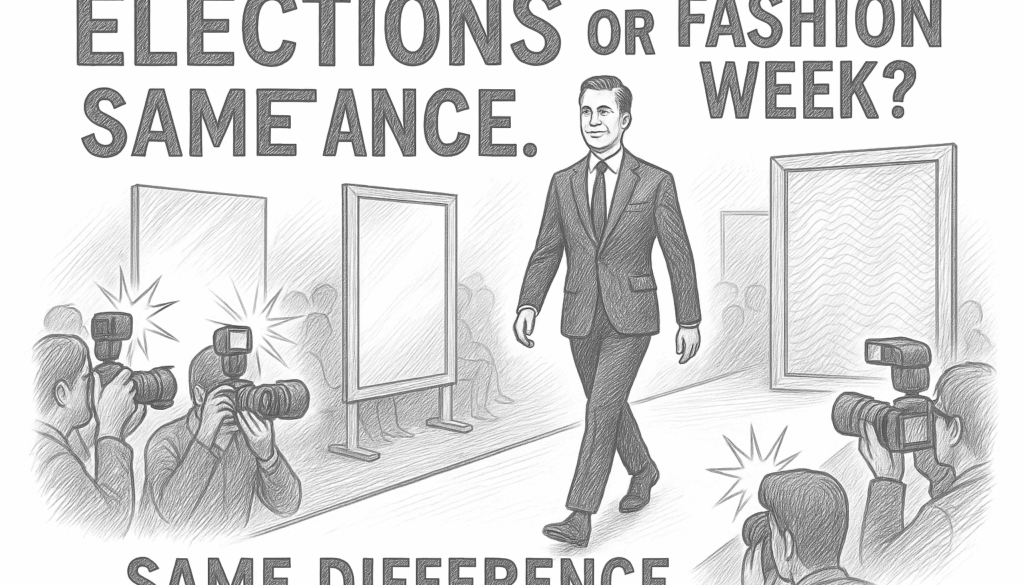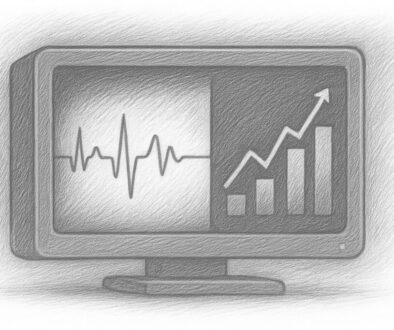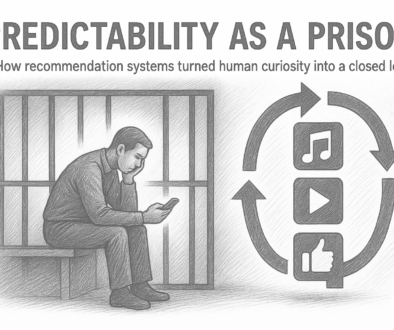How European Campaigns Replaced Policy With Portraits
Hey ballot-watchers—
If you strolled through Düsseldorf during last week’s municipal elections, you didn’t need to read a manifesto to know what was “on offer.”
You just needed to glance at the posters: polished portraits of candidates staring down at you, framed with slogans so thin they could be fortune-cookie slips. “Für alle. Für Dich. Für Düsseldorf.” It doesn’t matter what city you’re in—swap the name, keep the photo, the formula holds.
This isn’t politics anymore. It’s branding. And branding without substance is dangerous.
When the manifesto shrinks to a hashtag
Across Europe, the trend is clear: electoral programs have collapsed into one-liners. Campaign leaflets once laid out positions on taxes, housing, transport. Now they fit into Instagram captions. German city races, Italian municipal ballots, French departmental elections—the medium has swallowed the message.
If McLuhan were alive, he’d point at the posters and say: “I told you so.”
And voters? They’re not reading PDFs. They’re scanning faces. Cognitive science confirms what every campaign manager knows: humans make snap judgments about trustworthiness, strength, or competence in milliseconds when looking at a face.
Politicians have outsourced the hard work of policy to the soft power of photography.
Studies back this up: a 2019 experiment in Switzerland showed that when voters were asked to choose between two unknown candidates based only on portraits, their choices mirrored actual election results with 70% accuracy.
That’s not democracy—it’s physiognomy.

Image as policy
Think of it as a new hierarchy of persuasion:
- Smile > Program
- Suit > Substance
- Backdrop > Budget
The right lighting is doing more to swing votes than the right tax reform. Political strategists now hire stylists and portrait photographers with budgets that used to go to policy consultants.
In Italy, candidates are retouched like fashion models; in France, entire campaigns are storyboarded like Netflix shows. In Germany, the municipal ballot is less about mobility planning than about whether you look more “bürgernah” (close to the people) in blue or grey.
The rise of AI-driven campaign imagery pushes this logic further. In the 2024 European Parliament elections, watchdogs flagged multiple cases of synthetic campaign visuals: smiling crowds added, city skylines enhanced, even subtle facial retouching to project “competence” or “warmth.”
When image itself is fabricated, policy becomes almost irrelevant.
Why this is dangerous
A politics of faces is a politics without accountability. Slogans like “Fair. Strong. Together.”mean nothing when there’s no binding program underneath.
Citizens choose “affinity” instead of ideology, “vibes” instead of governance. And once elected, those candidates can pivot freely: no one can fact-check a smile.
This isn’t just lazy—it’s corrosive.
It creates a democracy of aesthetic consumption, where policies can be endlessly vague because the feeling of recognition replaces the need for content. Political scientists have warned of this “aesthetic democracy,” where visual appeal is not a vehicle for ideas but a substitute for them.
And it’s expensive.
In France’s 2022 presidential race, campaigns spent an estimated 40% of their communication budget on visual production(photos, video, design) while cutting staff for policy detail.
When money flows to imagery, less flows to substance.

This isn’t a German quirk.
Spain’s Sánchez campaigns on airbrushed energy more than policy bullet points. Macron’s En Marche revolution started with youthful imagery and vague slogans about renewal.
In Hungary and Poland, opposition groups cling to professionalized visuals to fight incumbents who flood the public sphere with state-funded billboards.
The playbook is converging: sharpen the jawline, blur the program.
What’s worse, the visual race incentivizes sameness.Scroll European campaign posters and it’s a sea of interchangeable headshots.
Center-left smiles, center-right smiles, populist grimaces—the aesthetic range is narrower than the ideological one. Politics begins to look like LinkedIn headshots pasted on lampposts.
So what now?
Image will never leave politics—nor should it. Voters are human, not algorithms, and humans respond to faces. But when image entirely replaces policy, democracy mutates into an attention economy contest. The short-term dopamine hit of recognition replaces the long-term work of governance.
The real challenge for European voters is simple but brutal: demand more. Read beyond the poster. Ask for PDFs, full programs, policy debates. Otherwise, we’re letting democracy run on stock photography—and the algorithms, consultants, and designers will keep serving it to us.
Until next time, stay critical.
Alex



